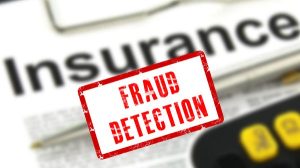
Detecting and Preventing Insurance Fraud
Insurance fraud presents a significant challenge for the insurance industry, with far-reaching implications for both insurers and policyholders. In this detailed examination, we will delve into the intricacies of detecting and preventing fraudulent claims, exploring the various types of insurance fraud, the tools and techniques used for detection, and the proactive measures insurers can take to mitigate this pervasive threat.
Understanding Insurance Fraud:
Insurance fraud encompasses a range of deceptive practices aimed at obtaining illegitimate benefits from insurance policies. These fraudulent activities can take many forms, including:
1. Staged Accidents:
Fraudsters orchestrate fake accidents or intentionally cause collisions to file fraudulent claims for vehicle damage, bodily injury, and medical expenses.
2. Falsified Injuries:
Individuals fabricate or exaggerate injuries from legitimate accidents to claim compensation for medical treatments, lost wages, and pain and suffering.
3. Property Damage Fraud:
Policyholders may exaggerate the extent of property damage or falsely report stolen items to receive inflated payouts from property insurance policies.
4. Premium Evasion:
Individuals provide false information or misrepresent facts on insurance applications to secure lower premiums, thereby defrauding insurers of rightful premiums.
5. Arson and Property Loss:
In extreme cases, individuals intentionally set fire to property or engage in vandalism to claim insurance payouts for property loss.
Detecting Insurance Fraud:
Detecting insurance fraud requires a multifaceted approach that combines advanced analytics, investigative techniques, and collaboration with industry partners. Insurers employ several methods to identify suspicious claims, including:
1. Data Analytics:
Insurers leverage sophisticated data analytics tools to analyze vast amounts of claim data, identifying patterns, anomalies, and inconsistencies that may indicate fraud. These tools can detect unusual claim frequencies, high-severity claims, and suspicious claimant behaviors.
2. Social Media Monitoring:
Monitoring social media platforms allows insurers to gather additional information about claimants’ activities and behaviors. Posts, photos, and updates can provide insights into a claimant’s lifestyle and activities, helping identify discrepancies in their claims.
3. Claimant Interviews and Investigations:
Conducting thorough interviews and investigations is essential in uncovering fraudulent activities. Insurers employ trained investigators to interview claimants, witnesses, and healthcare providers, verifying the authenticity of claims and medical treatments.
4. Collaboration with Fraud Databases:
Insurers participate in industry-wide fraud databases and share information about known fraudsters and suspicious activities. This collaborative effort helps prevent fraudsters from targeting multiple insurers with the same fraudulent claims.
5. Use of AI and Machine Learning:
Artificial intelligence and machine learning technologies are increasingly employed to detect fraud in real-time. These systems can analyze data patterns, flag suspicious claims instantly, and continuously learn from new data to improve fraud detection accuracy.
Preventing Insurance Fraud:
Prevention is key to combating insurance fraud effectively. Insurers can implement proactive measures to deter fraudsters and protect honest policyholders, including:
1. Fraud Awareness Training:
Training employees to recognize the signs of insurance fraud is essential. Insurers conduct regular fraud awareness programs to educate claims handlers, underwriters, and other staff members on the various types of fraud and red flags to watch for.
2. Robust Underwriting Practices:
Enhanced underwriting processes, such as rigorous background checks and verification procedures, help insurers identify high-risk applicants and prevent fraudulent policies from being issued.
3. Policyholder Education:
Educating policyholders about the consequences of insurance fraud and the importance of truthful disclosures fosters a culture of integrity. Clear communication about the claims process, policy coverage, and reporting procedures empowers policyholders to act responsibly.
4. Strong Anti-Fraud Policies:
Insurers establish and enforce strict anti-fraud policies and procedures to deter fraudulent activities. This includes zero-tolerance policies for fraud, regular audits of claims processes, and collaboration with law enforcement agencies to prosecute offenders.
5. Technology Solutions:
Investing in advanced technology solutions, such as fraud detection software and predictive analytics tools, strengthens insurers’ ability to detect and prevent fraud. These tools automate fraud detection processes, flag suspicious activities, and improve overall efficiency.
Conclusion:
Insurance fraud remains a persistent threat that requires constant vigilance and proactive measures from insurers. By understanding the various forms of fraud, employing advanced detection techniques, and implementing robust prevention strategies, insurers can safeguard their businesses and policyholders from the damaging effects of fraudulent activities.
As technology advances and fraudsters become more sophisticated, the insurance industry must continue to evolve its approach to fraud detection and prevention. Collaboration, innovation, and a commitment to integrity are essential in the ongoing fight against insurance fraud, ensuring a fair and sustainable insurance ecosystem for all stakeholders.